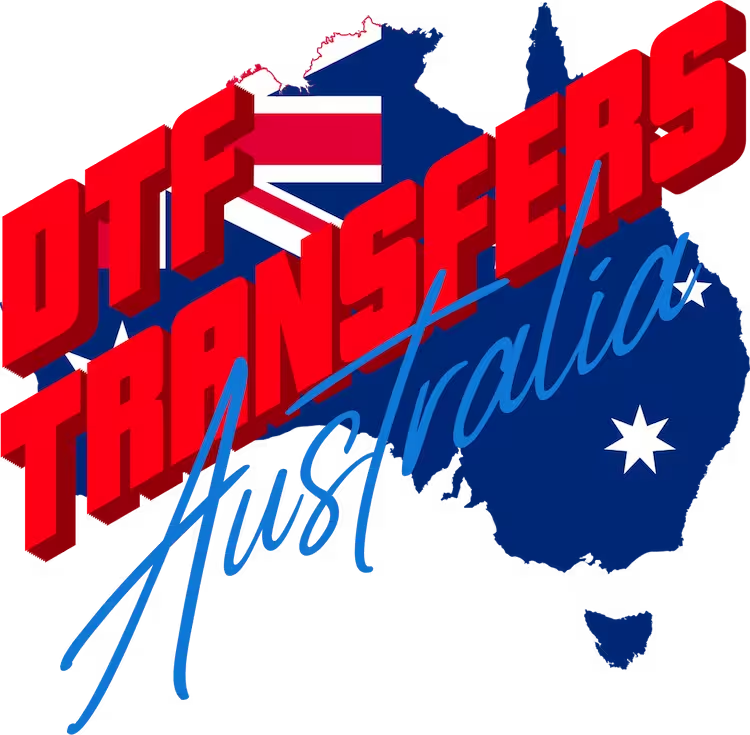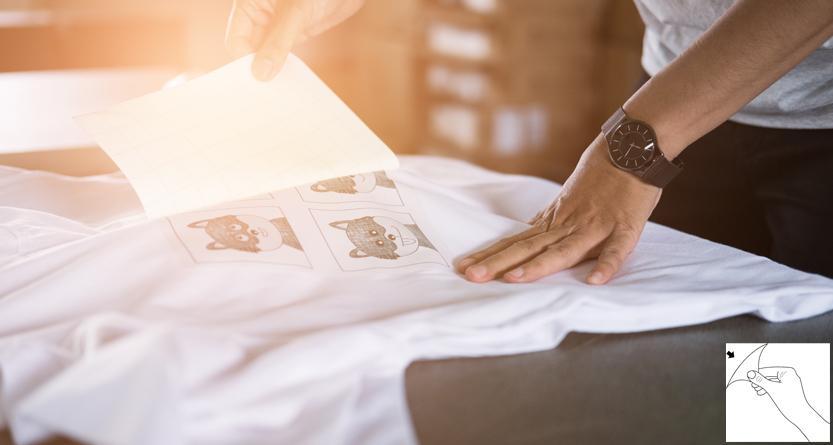All Posts, Direct To Film
Easy Peel DTF Film
Welcome to the forefront of custom T-shirt printing with our state-of-the-art Direct to Film (DTF) transfers. At DTF Transfers Australia, we pride ourselves on delivering premium quality transfers using our easy-peel film that redefine print durability and aesthetic appeal in the textile industry. Whether you’re a seasoned screen printer, a small print shop looking to expand your service offerings, or a hobbyist passionate about creating unique wearable art, our DTF transfer film is designed to meet your diverse needs.
Table Of Contents:
- Introduction To Our Easy Peel DTF Film
- Identifying High-Quality DTF Transfer Films
- The Role of PET Transfer Film in DTF Printing
- Advancements in Heat Transfer Technology
- Cost-Effective Strategies for Small Print Shops
- Conclusion
Introduction To Our Easy Peel DTF Film
At DTF Transfers Australia we have tested many, many films form different suppliers from around the globe. And we continue to do this so we are sure that we are printing on the best PET, DTF Film available at the current time. we have established a great relationship with our current supplier, and they are keeping us abreast of their new advancements as they make them.
Premium Quality That Sets Us Apart
Our commitment to excellence is evident in every sheet of DTF film we produce. Engineered for true hot peel performance, our films ensure a smooth and efficient application process that saves time and reduces waste. But what truly sets our products apart is their unparalleled scratch resistance and soft hand feel – qualities rarely found together in other transfer options available on the market.
The Importance of Quality Film
One of the most important consumables in DTF printing is the film. The quality of your DTF film directly affects the final print outcome. Poor quality film can lead to issues like ink bleeding, uneven transfer, or even damage to your garments.
Using high-quality DTF film in the production of custom DTF Transfes ensures crisp, vibrant prints that hold up wash after wash. It’s the foundation of a quality DTF print, so we do not skimp on this crucial component.
Selecting the Right DTF Consumables
Choosing high-quality consumables is crucial for creating exceptional Custom DTF Transfers, with the selection of film being a fundamental first step.
While the market offers various inexpensive films, many of these are based on older, outdated technologies that lack the benefits provided by the latest generation of DTF Films.
Although cost-saving is an important consideration for many, decisions should also factor in the quality differences. Frequently, higher-quality DTF Films are not significantly more expensive than their cheaper counterparts, and investing just a few extra dollars can substantially enhance the quality of the final print.
Identifying High-Quality DTF Transfer Films
So, how can you spot a high-quality DTF transfer film? Two key factors to look for are transparency and coating quality.
In terms of transparency, a more opaque film usually indicates a thicker coating and better ink absorption. Some manufacturers offer different thicknesses (like 75μ and 100μ) for various printing needs, along with different layers of coatings that require the fitting of the transfer be handled differently when printing and fitting.
Coating quality is a telltale sign. Poor coating can cause ink to run off the film or result in uneven, blotchy prints. Looking for films with high ink loading, fine line printing capabilities, a top layer that releases easily and leaves a soft hand film are crucial in making a premium film.
Another consideration is how well the adhesive can be applied and removed from the un-printed area of the film is also a consideration that should be taken into account.
All of these factors need to be taken into account when selecting a film stock to print quality DTF Transfers onto.
The Role of PET Transfer Film in DTF Printing
PET transfer film is a key player in the DTF printing process, but not all PET films are created equal. DTF printing requires a specific type of PET film with a special ink-absorbing coating.
This coating gives DTF transfer film a matte, frosted appearance rather than being completely transparent like regular PET film. The ink-absorbing layer is crucial for ensuring the ink adheres properly to the film and transfers smoothly onto the fabric.
Using untreated or low-quality PET films might seem like a cost-effective option, but it can lead to a host of printing issues. You might encounter staining, poor adhesion, or even damage to your garments. Stick with tried-and-true DTF transfer films for the best results.
Advancements in Heat Transfer Technology
Heat transfer technology is constantly evolving, and these advancements are making DTF printing even better. One key innovation is the development of high-temperature resistant films.
Traditional PET films can sometimes curl or melt under the high heat required for DTF transfer. This can ruin your print and even damage your heat press. High-temperature resistant films, on the other hand, can withstand the heat without any issues.
These advanced films allow for a smoother, more reliable transfer process. They also expand the range of fabrics you can print on, including heat-sensitive materials like nylon or spandex.
As heat transfer technology continues to improve, we can expect even more exciting developments in the world of DTF printing. From faster transfer times to enhanced durability, the future looks bright for this innovative printing method.
Different Types of DTF Transfer Films
Originally, DTF Film was only available as a cold peel film, but as technology and methods rapidly advanced, a hot peel film was developed. This new film only needed a few seconds to cool before it could be peeled. Eventually, a breakthrough led to the introduction of a true hot peel film that could be peeled immediately.
Today, the primary types of film available are true hot peel film, hybrid film, and cold peel film. Cold peel films are now primarily used for specialty finishes, such as gold foil or glitter.
We explore specialty finishes in greater detail in our other articles. Our articles help build on our overview of the different types of films, including the use of cold peel films for unique effects like glow in the dark or pearl finish transfers.
Vibrant Colours & Photo Realistic Prints
The ability of our DTF transfers to reproduce vibrant colours and photo-realistic prints will leave you astounded. By utilising advanced colour management techniques, high-quality ink formulations, Adhesives and quality film we produce prints that pop to life on most fabrics. This capability ensures your designs stand out from the crowd whether they’re bold graphics or intricate patterns.
Durability That Lasts Wash After Wash
A key concern for both businesses and consumers is the longevity of printed apparel. To address this, we rigorously test and use chemical-resistant films that maintain their quality through machine washing. When applied correctly, these films resist fading, cracking, and peeling. This commitment underscores our dedication to producing robust transfers that endure over time.
Choosing Between Cold Peel and Hot Peel Films
Cost-Effective Strategies for Small Print Shops
“Our Easy Peel DTF Film plays a crucial role in producing quality transfers that deliver outstanding print quality. At DTF Transfers Australia, we prioritise premium films known for their exceptional scratch resistance and soft texture, ensuring our prints are not only vibrant and long-lasting but also quick and easy to apply. Our dedication to superior quality not only elevates the final product but also distinguishes our transfers in the competitive DTF printing market.”


